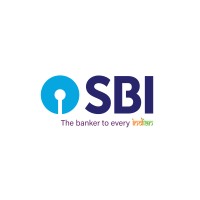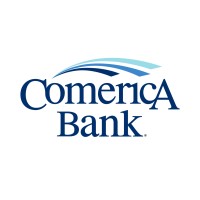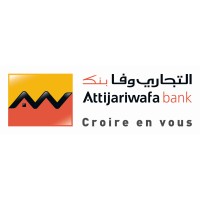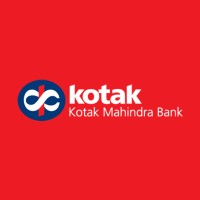Company Cyber Security Posture
NANA
NA Company Details
NA
NA
NA
NA
NA
NA
Scan still pending
NA
NA
Between 200 and 800
This score is AI-generated and less favored by cyber insurers, who prefer the TPRM score.
 NA Global Score
NA Global Score.png)

Company Scoring based on AI Models
| Model Name | Date | Description | Current Score Difference | Score |
|---|---|---|---|---|
| AVERAGE-Industry | 03-12-2025 | This score represents the average cybersecurity rating of companies already scanned within the same industry. It provides a benchmark to compare an individual company's security posture against its industry peers. | N/A | Between 200 and 800 |
Company Cyber Security News & History
| Entity | Type | Severity | Impact | Seen | Url ID | Details | View |
|---|
Company Subsidiaries

NA
Access Data Using Our API

Get company history
.png)
NA Cyber Security News
Mayer Brown advises Türkiye İş Bankası (İşbank) on its inaugural issuance of digital native notes (DNNs) on Euroclear’s innovative Digital Financial Market Infrastructure (D-FMI)
Mayer Brown advises Türkiye İş Bankası (İşbank) on its inaugural issuance of digital native notes (DNNs) on Euroclear's innovative Digital ...
Cybersecurity doctrine: Türkiye as a preventive hybrid actor | Daily Sabah
In recent years, Türkiye, for instance, conducted various counter-operations against PKK terrorist group-linked hacker groups, cracking their ...
Turkey's Crackdown on Illegal Gambling Opens the Floodgates for Compliant Fintech and Cybersecurity Leaders
Turkey's aggressive regulatory crackdown on illegal gambling and non-compliant fintech firms has reshaped its financial landscape, ...
Türkiye denies Israeli ties to military cybersecurity systems
The statement concluded that linking the Turkish Armed Forces to Israel is a calculated attempt at disinformation aimed at distorting public ...
Top 10 Best Paid Tech Job in Turkey in 2024
Explore the top 10 best paid tech jobs in Turkey for 2024. Find out industry salaries, roles, and the skills required for each position.
Operational resilience of the financial sector
Cyber resilience is fundamental to a firm's operational resilience. Disruptions from cyber-attacks can impact financial stability, ...
Musk's DOGE team raises major cyber security concerns
Young engineers deployed across the U.S. government as part of Elon Musk's Department of Government Efficiency have triggered alarm throughout ...
New ‘cybersecurity’ law in Turkey could criminalize reporting on data leaks
CHP MP Utku Çakırözer condemned the AKP's proposed cybersecurity law, stating that following the disinformation law, the government now aims to ...
What's on the cybersecurity horizon: Kaspersky shares cybersecurity trends for the Middle East, Turkiye and Africa
At its annual Cyber Security Weekend for the Middle East, Turkiye and Africa (META) region, Kaspersky (www.Kaspersky.co.za) Global Research ...

NA Similar Companies

State Bank of India
We are the largest Indian Public Sector Banking & Financial Services Company. Headquartered in Mumbai, our national presence across the country with over 22,000 branches and globally across all time-zones at 227 locations in 30 countries, makes us the leader in the sector. Our legacy ranges back to

Comerica Bank
Comerica Incorporated (NYSE: CMA) is a financial services company headquartered in Dallas, Texas, strategically aligned by the Business Bank, the Retail Bank, and Wealth Management. The Business Bank provides companies of all sizes with an array of credit and non-credit financial products and servic

KBZ Bank
KBZ Bank, established in 1994, is the largest privately owned bank in Myanmar and the first to have expanded internationally, with representative offices in Singapore, Thailand and Malaysia. With 18,000 staff, more than 480 branches nationwide and 40% market share of both retail and commercial banki

Attijariwafa bank
With our universal banking model, our pan-African scope, the complementarity of our businesses and our solid expertise, we are a leading player in the Moroccan and African financial sector. For over a century, we’ve been able to adapt by diversifying our business lines, renewing our offers and rev

Kotak Mahindra Bank
About Kotak Mahindra Group: Established in 1985, the Kotak Mahindra Group is one of India’s leading financial services conglomerates. In February 2003, Kotak Mahindra Finance Ltd. (KMFL), the Group’s flagship company, received a banking license from the Reserve Bank of India (RBI). With this, KMF

Banco de Chile
Somos una Corporación líder y comprometida con el país que brinda servicios financieros de excelencia a cada segmento de clientes. Buscamos permanentemente ser el mejor Banco para ellos, ser el mejor lugar para trabajar y ser la mejor inversión para nuestros accionistas. Lo hacemos de forma colabora

Frequently Asked Questions
Explore insights on cybersecurity incidents, risk posture, and Rankiteo's assessments.
NA CyberSecurity History Information
How many cyber incidents has NA faced?
Total Incidents: According to Rankiteo, NA has faced 0 incidents in the past.
What types of cybersecurity incidents have occurred at NA?
Incident Types: The types of cybersecurity incidents that have occurred include .
Additional Questions
What Do We Measure?
















Every week, Rankiteo analyzes billions of signals to give organizations a sharper, faster view of emerging risks. With deeper, more actionable intelligence at their fingertips, security teams can outpace threat actors, respond instantly to Zero-Day attacks, and dramatically shrink their risk exposure window.
These are some of the factors we use to calculate the overall score:
Identify exposed access points, detect misconfigured SSL certificates, and uncover vulnerabilities across the network infrastructure.
Gain visibility into the software components used within an organization to detect vulnerabilities, manage risk, and ensure supply chain security.
Monitor and manage all IT assets and their configurations to ensure accurate, real-time visibility across the company's technology environment.
Leverage real-time insights on active threats, malware campaigns, and emerging vulnerabilities to proactively defend against evolving cyberattacks.




